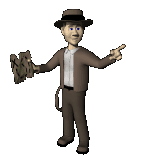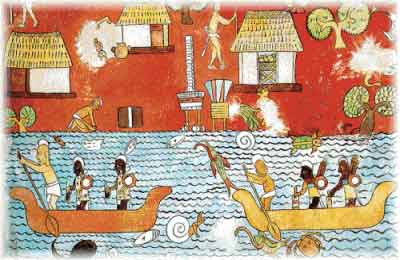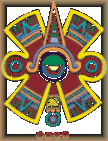
 :
:

      |
 People coming, people going, people talking, always talking- the idea of cultural transference is complex, and not easily condensed into a brief Internet format. Culture is spread by people, and people love to travel, then and now. The spread of culture is not a simple one way flow; ideas have moved in one direction or in both directions, or in one direction at one time and another direction at another time, or in almost any combination that you can think up.
One theory gaining wider acceptance is that of Mayan Cultural connection to the American Southwest. In this model, the origin of many Southwestern myths and cultural icons occurred through cultural diffusion, primarily brought about by the Pochteca traders from Mesoamerica, laden with burden baskets of trade goods. Was this the origin of the Kokopelli figure in rock art?
However, the flow of travelers and ideas was not all one way. It seems evident now that first, the collapse of the Chaco Culture, followed later by the general collapse and retreat of the Ancestral Puebloan Culture (Anasazi),probably produced some aggressive and adventuresome refugees moving back down into Mexico. These people would have added their cultural, spiritual and political beliefs back into the melting pot of culture that eventually produced the Aztec.
The spread of maize horticulture can be traced from Mesoamerican northward over many hundreds of years. An area of research that is showing promise for identification of widespread trade routes is based on the scientific "fingerprinting" of obsidian points that links them specifically to the exact volcano from which this material came. Turquoise can also be traced to the original mine. This is significant in the cultural sense, because when people trade goods, they also trade ideas.  Tessie Naranjo from Santa Clara Pueblo believes that the specific details of migration are less important to Pueblo philosophy than is the fact of movement. Although we tend to think of modern Pueblos as permanently located in their own "center place", Tessie expresses the ancient reality of Pueblo migrations as, "Without movement, there is no life."  Evidence for this flow of ideas is widespread. Established archaeological research has produced trade goods from Mexico in the form of parrot bones, parrot feathers, copper bells and shells, unearthed from ancient Native American ruins in the Southwest. There is the obvious similarity of the Mayan temple pyramid with the less complex Lower Colorado and Gila River Summit Paths, with both of these forms a derivative of the concept of a Spirit Mountain, where Gods, Spirits and Man could communicate. |
![]()